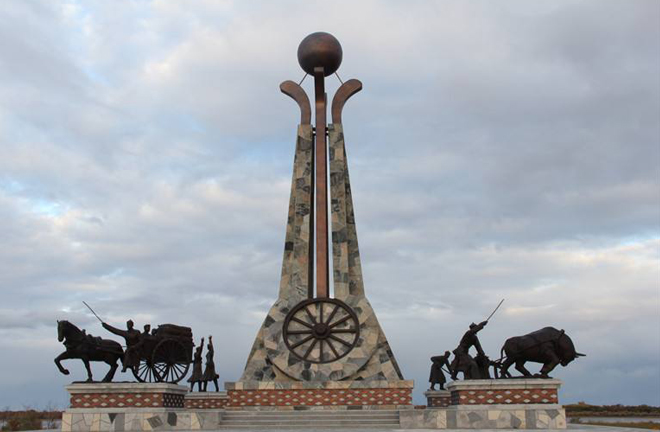Fularji District’s SOEs reverse losses

Fularji District Plaza Photo: FILE
The Fularji District in Qiqihar, Heilongjiang Province, is home to many enterprises called China’s “eldest sons” for their tremendous contribution to the country’s industrialization in the 1950s. In recent years, the dwindling internal and external demand has encouraged enterprises to rejuvenate by utilizing the advantages of local enterprise clusters and a large talent pool. Furthermore, reforms have ramped up innovation. The collaborative development of multiple sectors has helped Fularji to transform into a new industrial district attracting professionals and more economic sectors.
Fularji is an important old industrial base invested in and constructed during the First Five-Year Plan period from 1953 to 1957. In this area, the Soviet Union helped establish such enterprises as China First Heavy Industries, Beiman Special Steel and Qiqihar Thermal Power Plant. It is known as the city of steel and machines for the companies’ ground-breaking contribution to the country’s industrialization.
“The Fularji District, however, suffered serious losses in business operations, and the regional economy went from bad to worse due to persistent constraints on institutions and mechanisms. It was considered an old industrial zone in critical decline,” said Xie Guangquan, secretary of the Fularji District Party Committee, who is outspoken about the district’s past bottleneck.
The Fularji District began to exist and thrive because of enterprises. The revitalization of its state-owned enterprises is indispensable for the district’s development. After reflections and brainstorming, a fundamental reform aiming at state-owned enterprises was begun.
Beiman Special Steel Company completed a historic transformation. Its draft reorganization plan was approved in 2017. After that approval, Jianlong Group officially joined the company as the controlling shareholder, a breakthrough in the company’s challenging mixed-ownership reform.
As a part of the reorganization, Jianlong Group alleviated the heavy debt burden of Beiman Special Steel. The company restarted its operations and showed sign of recovery. In 2018, its main income hit 4.17 billion yuan and annual profits totaled 105 million yuan. In the first quarter of 2019, its main business income was 14.85 million yuan, an increase of 82% year-on-year. The total profit was 18.05 million yuan while it suffered a loss of 49.07 million yuan in the same period in 2017.
“In the Fularji District, state-owned enterprises and local companies have fought their own battles for years. Poor intensification and a lack of division of labor and technical exchange hinder the district’s upgrade and expansion,” said Xie.
To break the boundaries among sectors and local enterprises, Fularji District fosters supporting companies based on large enterprises. It strives to develop and expand technology-intensified sectors so that they can quickly increase their scale. There are 23 supporting companies in Fularji District. Nine of them have signed strategic cooperation agreements with China First Heavy Industries concerning casting, forging and small parts assembly, whose total contract value has increased from less than 80 million yuan in 2016 to nearly 300 million yuan.
Innovation is inseparable from the introduction of talent. Based on the manufacturing industry, Fularji has created several influential and dynamic technological innovation platforms. It collaborated with Yanshan University on a technical research institute, attracting more than 150 professionals who have expertise in various fields.
Statistics show that in 2018, the total output value and main business income of above-scale industrial enterprises in the Fularji District soared by 117.4% and 95.3% respectively compared with in 2016. Over the same period, the profit of these enterprises has grown by 630 million yuan, and thereby the district has reversed early losses.
This article was translated from Economic Information Daily.
edited by MA YUHONG

 PRINT
PRINT CLOSE
CLOSE